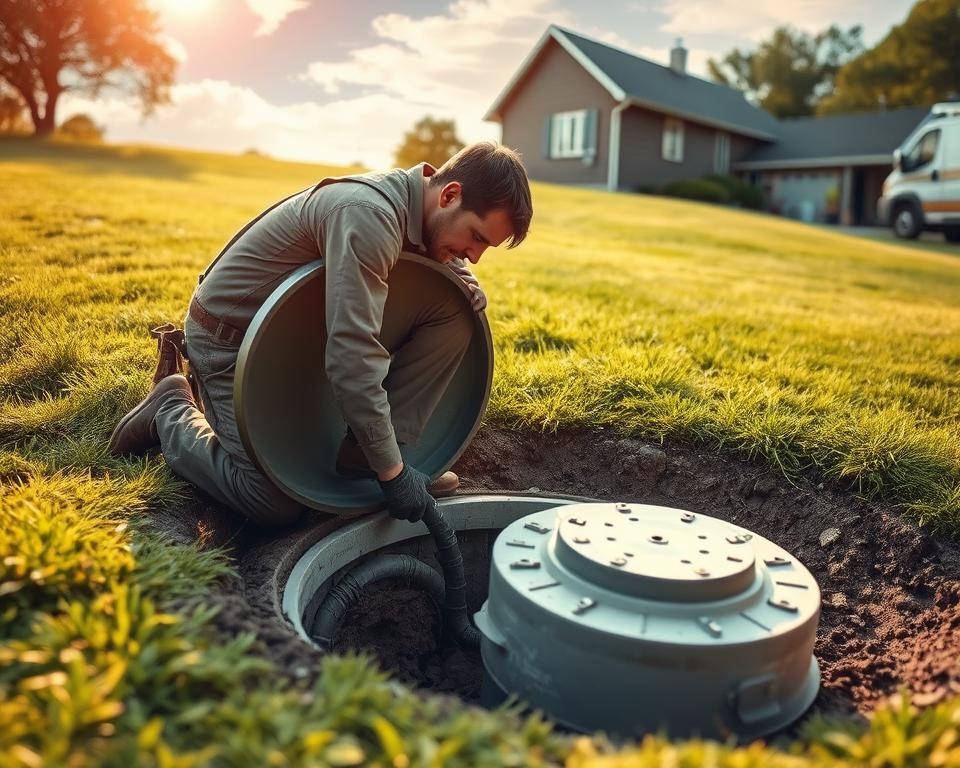Biennial Septic Cleaning: Essential Maintenance Tips
Are you aware that just one household septic tank can hold as much as 1,000 gallons of wastewater? That’s a lot of waste that accumulates with time, potentially leading to a variety of costly and hazardous issues. Regular maintenance, including biennial septic cleaning, is crucial to keep your septic system functioning efficiently and to avoid expensive repairs.
In this post, we will explore the significance of biennial septic cleaning, the value of regular septic inspections, best practices to ensure effective cleaning, and the way to maximize the efficiency of the septic system.
The Importance of Regular Septic Inspections
Regular septic inspections play a vital role to maintain the health and functionality of your septic system. By conducting routine inspections, you are able to identify potential issues and damage before they escalate into major problems. These inspections allow you to assess the condition of the septic tank, monitor the amount of waste and sludge, and assess the overall efficiency from the system.
Professional septic inspections are strongly recommended as they offer a thorough assessment of your septic system. Trained technicians can detect minor issues that may go unnoticed and address them promptly. By catching these issues early on, you can save yourself from costly repairs and much more extensive damage in the future.
Along with identifying issues, regular inspections also help determine whether your septic tank requires septic pumping San Fernando or cleaning. Over time, waste accumulates within the tank, which can lead to clogs, backups, and system failure otherwise addressed. Proper maintenance, including septic system pumping, aids in preventing these complications and ensures the longevity of the septic system.
Biennial Septic Cleaning Best Practices
To ensure optimal performance and longevity of your septic system, it’s important to stick to the best septic cleaning practices. By incorporating these practices in your routine maintenance plan, you can avoid costly repairs and potential system failures.
- Schedule biennial septic cleanings having a reputable septic service company. Professional cleaning is crucial to get rid of accumulated waste and sludge from the septic tank.
- Follow the recommended pumping frequency based on the size and use of your septic system. Proper maintenance intervals can vary depending on these factors, so consult with the septic service company for guidance.
- Ensure that the septic tank is definitely accessible which the lids are securely fastened prior to the cleaning appointment. This can facilitate the cleaning process and prevent any accidents or damage during the service.
- Communicate any concerns or issues you have noticed with the septic service provider. They will be able to address any sort of problems or provide tips for maintenance.
- Avoid flushing non-biodegradable items, chemicals, and excessive quantities of water in to the septic system. These may disrupt the delicate balance of bacteria within the tank and lead to clogs or system malfunctions.
By implementing these best practices, you can guarantee the efficiency and longevity of your septic system, keeping your home and the environment safe and healthy.
Maximizing the Efficiency of the Septic System
Efficient septic system care plays a crucial role in prolonging the lifespan of the septic system and preventing costly repairs. By following these best practices, you can ensure optimal performance and maximize the efficiency of your septic system:
- Avoid excessive water usage: Overloading your septic system with large volumes of water can strain its capacity. Distribute water usage through the entire week, and fix any leaks promptly to reduce water waste and prevent unnecessary stress on the system.
- Use water-efficient appliances and fixtures: Invest in high-efficiency toilets, showers, and washing machines to minimize water consumption. These appliances are made to use less water while maintaining their functionality, reducing the stress on your septic system.
- Dispose of waste responsibly: Only flush biodegradable materials along the drains. Avoid getting rid of non-biodegradable items like grease, paper towels, and feminine hygiene products, as they can clog the device and cause harm.
- Maintain and inspect drains and plumbing: Regularly neat and inspect drains to prevent blockages and ensure smooth water flow. Avoid pouring harsh chemicals down the drains, as they can disrupt the natural balance of bacteria within the septic tank.
By using these septic system care practices, you are able to promote the efficiency of the system and minimize the risk of costly repairs. Additionally, it is usually recommended to consult with a professional septic service company for further guidance and routine maintenance.
Professional Septic Cleaning: What to anticipate
When it comes to biennial septic cleaning, hiring a professional septic service provider is important for maintaining the health and functionality of your septic system. Here’s what you can expect during a professional septic cleaning:
- The assessment: The septic service company will begin by assessing the condition of your septic system. This requires inspecting the tank, pipes, and drainage field to identify any signs of damage or issues.
- Pumping out waste and sludge: Next, the septic service company will pump out the accumulated waste and sludge from the septic tank. This process helps remove any build-up which can cause blockages and system failures.
- Thorough cleaning: The provider will ensure that the septic tank is thoroughly cleaned, removing any remaining debris or residue that could impact the system’s efficiency.
- Inspection: After cleaning, the septic service provider will inspect the tank and drainage field once more to make sure there are no problems or signs of damage. This step is crucial for early detection and prevention of major issues.
- Recommendations and report: Finally, the septic service provider provides you with an in depth report of the cleaning process as well as any tips for ongoing maintenance or repairs. This can help you remain informed concerning the health of the septic system and take necessary action to help keep it functioning optimally.
By entrusting your professional septic cleaning to some reputable septic service provider, you can rest assured that the septic system is in capable hands. Regular professional cleanings are an integral part of maintaining a wholesome septic system and ensuring its long term functionality.
| Assessment | Pumping | Thorough Cleaning | Inspection | Recommendations and Report |
|---|---|---|---|---|
| Assess the health of the septic system | Pump out accumulated waste and sludge | Thoroughly clean the septic tank | Inspect the tank and drainage field for damage | Give a detailed report and maintenance recommendations |
Common Mistakes to Avoid in Septic System Maintenance
Proper upkeep of your septic method is crucial to ensure its efficiency and longevity. Avoiding common septic system maintenance mistakes will help prevent costly repairs and system failure. Here are some key mistakes to avoid:
- Flushing Non-Biodegradable Items: Usually do not flush non-biodegradable items, such as wipes, dental floss, and cigarette butts, in to the septic system. These items can clog the pipes and disrupt natural balance of bacteria in the septic tank.
- Pouring Grease, Oil, and Chemicals: Avoid pouring grease, oil, or chemicals down the drains. These substances can accumulate within the septic tank and inhibit the breakdown of waste materials by the bacteria, leading to potential blockages and system malfunctions.
- Excessive Water Usage: Be mindful of excessive water usage, especially throughout a short period. Flooding the septic system with a large amount of water can overload the system, causing it to become overwhelmed and potentially leading to backups or leaks.
- Avoid Heavy Objects over Drainfield: Do not place heavy objects or park vehicles on the drainfield area. This can cause damage to the pipes and drainage system, impeding the proper flow of wastewater and resulting in potential system failure.
- Neglecting Regular Maintenance: Neglecting regular maintenance, including inspections and cleanings, may have serious consequences for your septic system. Regular maintenance helps detect issues early on and enables timely repairs, preventing major problems and costly repairs in the long run.
By avoiding these common septic system maintenance mistakes, you can guarantee the proper functioning and longevity of the septic system. Remember to follow best practices, schedule regular inspections and cleanings, and communicate any concerns to a professional septic service provider.
Main Findings
Proper maintenance is vital for the efficiency and longevity of your septic system. By using best practices, including biennial septic cleaning, regular inspections, and careful usage, you can prevent major issues and costly repairs.
Biennial septic cleaning plays a significant role in maintaining a healthy septic system. It involves pumping out the accumulated waste and sludge every two years. This process helps prevent clogs, backups, and system failure, ensuring the smooth operation of your septic system.
Furthermore, regular inspections enable the early detection of any potential issues or damages to your septic system. By identifying issues at an early stage, you are able to address them promptly, minimizing the potential risk of extensive damage and dear repairs.
By taking care of your septic system, you are not only safeguarding the well-being of your household but also leading to the security of the environment. Proper septic system maintenance ensures the health and safety of your family and prevents groundwater contamination.



